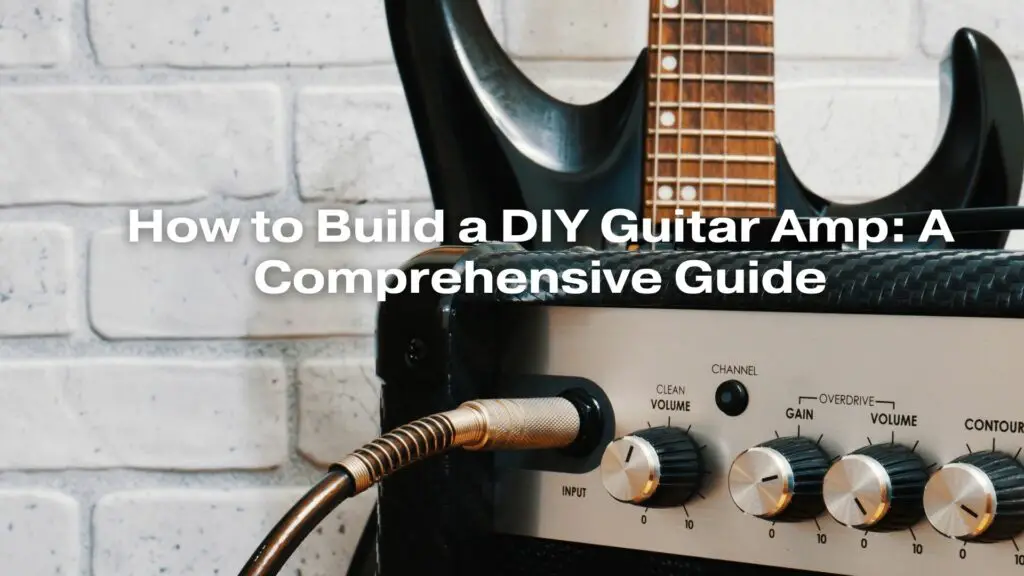Building your own DIY guitar amplifier can be a rewarding and educational experience. Not only do you get to customize your amp to your specific preferences, but you also gain a deeper understanding of how amplifiers work. In this comprehensive guide, we’ll take you through the steps of building a DIY guitar amp, from selecting the right components to assembling and testing your creation.
1. Determine the Amp Type
Before you start your DIY guitar amp project, decide on the type of amplifier you want to build. The most common types are:
- Tube Amps: Known for their warm and natural sound, tube amps use vacuum tubes to amplify the signal. Building a tube amp requires more technical expertise and can be more expensive.
- Solid-State Amps: Solid-state amps use semiconductor components for amplification and are generally easier to build and less expensive. They can offer a clean and reliable sound.
- Hybrid Amps: Hybrid amps combine both tube and solid-state components, offering the benefits of both technologies. These are often a good compromise between sound quality and complexity.
2. Gather the Necessary Tools and Components
Once you’ve decided on the amp type, gather the essential tools and components you’ll need. Common tools include a soldering iron, solder, wire cutters, pliers, a multimeter, and a drill. As for components, you’ll need resistors, capacitors, transistors (for solid-state amps), tubes (for tube amps), a speaker, and a chassis to house everything.
3. Design or Choose a Schematic
Designing an amplifier circuit requires a good understanding of electronics. If you’re new to amp building, it’s recommended to start with a pre-existing schematic or kit. You can find DIY guitar amp kits online or select a popular schematic from a trusted source. Make sure to choose a schematic that matches your skill level.
4. Build the Amplifier Circuit
Follow the schematic or kit instructions to build the amplifier circuit. This involves soldering components onto a circuit board or turret board. Pay close attention to the component values and their placement, as accuracy is crucial for proper function.
5. Assemble the Amplifier Chassis
Mount the completed circuit into the amplifier chassis. This may involve drilling holes for input jacks, knobs, switches, and speaker connections. Carefully secure the circuit in place, ensuring components are well-insulated and not in contact with the chassis to prevent electrical shorts.
6. Wire the Amplifier
Wire the amplifier according to the schematic or kit instructions. This includes connecting the input and output jacks, power supply, controls, and speaker. Use appropriate gauge wires for each connection, and be sure to keep your wiring clean and organized.
7. Test the Amplifier
Before powering on the amplifier, double-check your wiring and connections to avoid any potential hazards. Once you’re confident that everything is in order, power on the amplifier and start with a low volume setting. Test all the controls, inputs, and outputs to ensure they’re functioning correctly. If you encounter any issues, use a multimeter to troubleshoot and identify the problem.
8. Enclosure and Aesthetics
Now it’s time to finish the amp’s enclosure. You can paint or finish the chassis and install any additional components such as knobs, a grill cloth, and a logo plate. The aesthetics are entirely up to you, so feel free to get creative.
9. Fine-Tune Your Amp
After you’ve built and tested your DIY guitar amp, you may want to fine-tune the circuit to achieve your desired sound. This might involve adjusting component values or experimenting with different tubes or transistors. Remember, tweaking the circuit can have a significant impact on the amp’s tone.
10. Play and Enjoy
With your DIY guitar amp completed and fine-tuned to your liking, it’s time to plug in your guitar and enjoy the fruits of your labor. You’ll have a sense of pride and satisfaction knowing that you built your own custom amplifier, and you can fine-tune it further as you play and learn.
Building a DIY guitar amp is a challenging but rewarding project that can deepen your understanding of amplifiers and yield a unique piece of gear. Whether you’re a seasoned builder or just starting out, the experience of creating your own amplifier can be an exciting journey into the world of electronics and music.

